Author Biographies 4
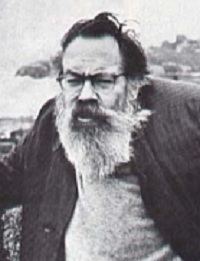 John Berryman
John Berryman
1914-1972
John Allyn Berryman (October 25, 1914-January 7, 1972) was an American poet and scholar, born in McAlester, Oklahoma. He was a major figure in American poetry in the second half of the 20th century and was considered a key figure in the Confessional school of poetry. His best-known work is The Dream Songs.
John Berryman was born and raised in Oklahoma until the age of 10, when his father, John Smith, a banker, and his mother, who was a schoolteacher, moved to Tampa, Florida. In 1926, in Florida, when the poet was 12, his father shot and killed himself just outside his son’s bedroom window. Berryman would later write about his father’s suicide in poems from The Dream Songs.
After his father’s death, Berryman’s mother remarried another banker who was also named John, and they moved to New York City. Her new husband’s last name was Berryman, and the poet took this last name, giving him the same exact name as his stepfather. Although his stepfather would later divorce his mother, Berryman and his stepfather stayed on good terms. His stepfather sent him to a private school in Connecticut (South Kent School). Then Berryman went on to graduate from Columbia College in 1936. He also studied overseas at Clare College, Cambridge, on a Kellett Fellowship awarded by Columbia.
Berryman would soon publish some of this early verse in his first book, simply titled Poems, in 1942. His first mature book, The Dispossessed, appeared six years later.
In 1950, Berryman published a biography of the fiction writer Stephen Crane, whom he greatly admired. This book was followed by his next significant book of poems, Homage to Mistress Bradstreet (1956), Berryman’s first book to receive “national attention.” Berryman’s great poetic breakthrough occurred after he published 77 Dream Songs in 1964. The book won the 1965 Pulitzer Prize for Poetry and solidified Berryman’s standing as one of the most important poets of the post-World War II era. He was elected a Fellow of the American Academy of Arts and Sciences in 1967.
Berryman continued to work on the “dream song” poems and published a second, significantly longer volume, entitled His Toy, His Dream, His Rest, in 1969. This book won the National Book Award and the Bollingen Prize, and Berryman republished 77 Dreams Songs and His Toy, His Dream, His Rest, as one book, The Dream Songs, later that same year. In 1970 he published his followup to The Dream Songs, Love & Fame, in which he dropped the mask of Henry and wrote candidly about himself. Delusions Etc. (1972) was Berryman’s last book, focusing on his religious concerns and his own spiritual rebirth. The book was published posthumously and, like its predecessor, Love & Fame, it is considered a minor work.
Berryman taught at the University of Iowa in the Writer’s Workshop, Harvard University and the University of Minnesota, where he spent the majority of his career.
Berryman lived turbulently. Throughout his life, he suffered from alcoholism and depression, and on the morning of January 7, 1972, he killed himself by jumping from the Washington Avenue Bridge in Minneapolis, Minnesota, onto the west bank of the Mississippi River.
Source: http://en.wikipedia.org/wiki/John_Berryman
 Bibliography
Bibliography
Press your browser’s BACK button to return to the previous page.
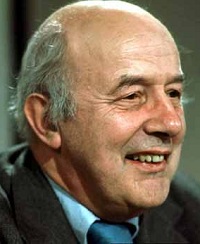 John Betjeman
John Betjeman
1906-1984
Sir John Betjeman (August 28, 1906-May 19, 1984) was an English poet, writer and broadcaster who described himself in Who’s Who as a “poet and hack.”
He was a founding member of the Victorian Society and a passionate defender of Victorian architecture. Starting his career as a journalist, he ended it as one of the most popular British Poets Laureate to date and a much-loved figure on British television.
For the last decade of his life Betjeman suffered increasingly from Parkinson’s Disease. He died at his home in Trebetherick, Cornwall, on May 19, 1984, aged 77.
Source: http://en.wikipedia.org/wiki/John_Betjeman
 Bibliography
Bibliography
Press your browser’s BACK button to return to the previous page.
 Robert Beverley
Robert Beverley
1673-1722
Robert Beverley Jr. (1673-April 21, 1722) was an important historian of early colonial Virginia. He was born in Jamestown and died in King and Queen County, Virginia. He was also a substantial planter of the time as well as an official in the colonial government.
Beverley’s History and Present State of Virginia, published originally in London in 1705, is considered by many to be the most important and accurate history of early life in the Virginia colony. Like his contemporary, William Byrd, Beverley admired the Indians and remarked on the strange European superstitions about Virginia – for example, the belief “that the country turns all people black who go there.” He also noted the great hospitality of Southerners, a trait maintained today.
Beverley took part in Lt. Governor Alexander Spotswood’s 1716 “Knights of the Golden Horseshoe Expedition” to the Shenandoah Valley. Journalist John Fontaine records that, on the return trip, both Beverley and his horse fell and rolled to the bottom of a hill, but without serious injury to either. However, when Beverley published a revised edition of his History in 1722, he continued it only to 1710, so there is no known account by Beverley of this event.
Concerning slavery, in the 1722 re-edition, Beverley observed that, while both black males and females were likely to work in fields, white women were not.
Source: http://en.wikipedia.org/wiki/Robert_Beverley,_Jr.
 Bibliography
Bibliography
Press your browser’s BACK button to return to the previous page.
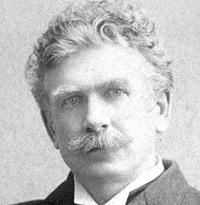 Ambrose Bierce
Ambrose Bierce
1842-1914
Ambrose Bierce was born on June 24, 1842 in Meigs County, Ohio. He was an editor, journalist and short story writer, capturing his Civil War experiences in vivid detail.
Reared in Kosciusko County, Indiana, Bierce became a printer’s devil (apprentice) on a Warsaw, Indiana, paper after about a year in high school. In 1861 he enlisted in the 9th Indiana Volunteers and fought in a number of Civil War battles, including Shiloh and Chickamauga. After being seriously wounded in the Battle of Kennesaw Mountain in 1864, he served until January 1865 and received a merit promotion to the rank of major in 1867.
Resettling in San Francisco, which was experiencing an artistic renaissance, he began contributing to periodicals, particularly The News Letter, of which he became editor in 1868. Bierce was soon the literary arbiter of the West Coast. “The Haunted Valley” (1871) was his first story. In December 1871, he married Mary Ellen Day, and from 1872 to 1875 the Bierces lived in England, where he wrote for the London magazines, Fun and Figaro, edited The Lantern for the exiled French empress Eugenie and published three books: The Fiend’s Delight (1872), Nuggets and Dust Panned Out in California (1872) and Cobwebs from an Empty Skull (1874).
In 1877, he became associate editor of The San Francisco Argonaut but left it in 1879-80 for an unsuccessful try at placer mining in Rockerville in the Dakota Territory. Thereafter he was editor of The San Francisco Illustrated Wasp for five years. In 1887, he joined the staff of William Randolph Hearst’s San Francisco Examiner, for which he wrote the Prattler column. In 1896, Bierce moved to Washington, D.C., where he continued newspaper and magazine writing.
In 1913, tired of American life, he went to Mexico, then in the middle of a revolution led by Pancho Villa. His end is a mystery, but a reasonable conjecture is that he was killed in the siege of Ojinaga in January 1914.
Source: http://www.biography.com/people/ambrose-bierce-9212162
 Bibliography
Bibliography
Press your browser’s BACK button to return to the previous page.
 The Bill of Rights
The Bill of Rights
1789
The Bill of Rights is the collective name for the first 10 amendments to the United States Constitution. These limitations serve to protect the natural rights of liberty and property. They guarantee a number of personal freedoms, limit the government’s power in judicial and other proceedings and reserve some powers to the states and the public. While the amendments originally applied only to the federal government, most of their provisions have since been held to apply to the states by way of the 14th Amendment.
The amendments were introduced by James Madison to the first United States Congress as a series of legislative articles. They were adopted by the House of Representatives on August 21, 1789, formally proposed by joint resolution of Congress on September 25, 1789, and came into effect as Constitutional Amendments on December 15, 1791, through the process of ratification by three-fourths of the states. While 12 amendments were passed by Congress, only 10 were originally passed by the states. Of the remaining two, one was adopted as the 27th Amendment and the other technically remains pending before the states.
Originally, the Bill of Rights included legal protection for land-owning white men only, excluding African-Americans and women. It took additional Constitutional Amendments and numerous Supreme Court cases to extend the same rights to all U.S. citizens.
The Bill of Rights plays a key role in American law and government and remains a vital symbol of the freedoms and culture of the nation. One of the first 14 copies of the Bill of Rights is on public display at the National Archives in Washington, D.C.
Source: http://en.wikipedia.org/wiki/United_States_Bill_of_Rights
 Bibliography
Bibliography
Press your browser’s BACK button to return to the previous page.
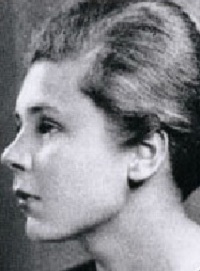 Elizabeth Bishop
Elizabeth Bishop
1911-1979
Elizabeth Bishop was born in Worcester, Massachusetts, in 1911, but spent part of her childhood with her Canadian grandparents after her father’s death and mother’s hospitalization. She attended Vassar, where she majored in English, although she had originally intended to study music composition and piano.
In addition to working on the school newspaper, The Vassar Miscellany, Bishop founded a literary magazine, Con Spirito, with fellow students Mary McCarthy, Eleanor Clark and Muriel Rukeyser. It was as a Vassar student that Elizabeth Bishop met Marianne Moore.
Bishop traveled extensively in Europe and lived in New York, Key West, Florida, and, for 17 years, in Brazil. She taught briefly at the University of Washington, at Harvard for seven years, at New York University and, just prior to her death in 1979, at Massachusetts Institute of Technology.
Bishop won virtually every poetry prize in the country. Her first book, North & South, won the Houghton Mifflin Poetry Award for 1946. In 1955, she received the Pulitzer Prize for a volume containing “North & South” and “A Cold Spring.” Her next book of poetry, Questions of Travel (1965), won the National Book Award and was followed by The Complete Poems in 1969. Geography III (1976) received the National Book Critics Circle Award. In 1976, Bishop became both the first American and the first woman to win the Books Abroad/Neustadt Prize for Literature.
In addition to her volumes of poetry, she translated a famous Brazilian diary, The Diary of Helena Morley, edited and partially translated An Anthology of Contemporary Brazilian Poetry (1972) and was a prolific contributor to The New Yorker. In 1967, Bishop was the recipient of two Guggenheim fellowships. She received honorary degrees from Adelphi, Brandeis, Brown, Dalhousie and Princeton universities, as well as from Smith and Amherst colleges. A chancellor of the Academy of American Poets, Bishop was also a member of the American Academy of Arts and Letters and a consultant in poetry to the Library of Congress in 1949-50.
Elizabeth Bishop died on October 6, 1979.
Source: http://www.poemhunter.com/elizabeth-bishop/biography/
 Bibliography
Bibliography
Press your browser’s BACK button to return to the previous page.
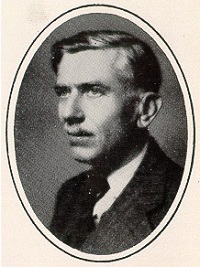 John Peale Bishop
John Peale Bishop
1892-1944
John Peale Bishop (May 21, 1892-April 4, 1944) was an American poet and man of letters.
Bishop was born in Charles Town, West Virginia, to a family from New England, and attended school in Hagerstown, Maryland. When 18, Bishop fell victim to a severe illness and lost his sight for some time. He entered Princeton University in 1913, at age 21, where he became friends with Edmund Wilson and F. Scott Fitzgerald. He graduated from Princeton in 1917 and served with the U.S. Army for two years in Europe. He was the model for the character Thomas Parke D’Invilliers in Fitzgerald’s first novel, This Side of Paradise.
Upon return to the United States, he wrote poetry, as well as essays and reviews for Vanity Fair in New York City. In 1922, he married Margaret Hutchins, and they soon moved to France where they lived until 1933, punctuated by one stint for Paramount Pictures in New York (1925-6). While in France they bought the Chateau de Tressancourt at Orgeval, Seine et Oise, near Paris, where they raised three sons.
In 1933, his family returned to the United States, residing first in Connecticut, then New Orleans and finally in a house on Cape Cod. His novel, Act of Darkness, based on the true story of the rape of a prominent Charles Town social figure by a local Charles Town man, caused a scandal in the town when it was published. He became chief poetry reviewer for The Nation (1940), served as publications director in the Office of the Coordinator of Inter-American Affairs in 1941-42 and was then invited to be Resident Fellow at the Library of Congress. He died within a few months of his appointment, on April 4, 1944, in Hyannis, Massachusetts.
Source: http://en.wikipedia.org/wiki/John_Peale_Bishop
 Bibliography
Bibliography
Press your browser’s BACK button to return to the previous page.
 H.G. Bissinger
H.G. Bissinger
1954-
Harry Gerard Bissinger III, also known as H.G. Bissinger and Buzz Bissinger (born November 1, 1954), is an American journalist and author.
He graduated from the Phillips Academy in 1972 and from the University of Pennsylvania in 1976, where he was a sports and opinion editor for The Daily Pennsylvanian.
While writing for The Philadelphia Inquirer, he won the Pulitzer Prize for Investigative Reporting for his story on corruption in the Philadelphia court system in 1987. In 1998, his article, “Shattered Glass,” an expose of the career of New Republic writer Stephen Glass, was published in Vanity Fair, where he is a contributing editor.
His magazine work has also appeared in The New York Times and Sports Illustrated. Bissinger’s article for Vanity Fair, “Gone with the Wind” (August 2007), about the saga of 2006 Kentucky Derby Winner Barbaro, was optioned by Universal Pictures. Bissinger’s article in Vanity Fair, “Inventing Ford Country” (March 2009), details the role Monument Valley played in the birth of American cinema.
In 2008, Bissinger wrote The Throwback, an online sports column for The New York Times.
He is perhaps best known for his book, Friday Night Lights, which documents the 1988 season of the football team of Permian High School in Odessa, Texas.
He has written two books in addition to Friday Night Lights: A Prayer for the City (1998), which offers insight into the urban political scene of Philadelphia during Mayor Ed Rendell’s term in the 1990s; and The New York Times’ bestselling Three Nights in August (2005), which chronicles a series in August 2003 between the St. Louis Cardinals and the Chicago Cubs through the perspective of Cardinals manager Tony La Russa.
Bissinger’s next book, Shooting Stars, was published in September 2009.
Source: http://en.wikipedia.org/wiki/H._G._Bissinger
 Bibliography
Bibliography
Press your browser’s BACK button to return to the previous page.
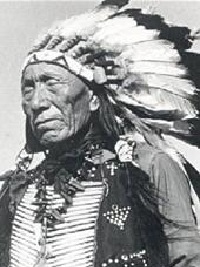 Black Elk
Black Elk
1863-1950
Nicholas Black Elk was an Oglala Sioux medicine man in the transition period from nomadic to reservation life for his people and then, as an interviewee, a source for Native American tribal traditions and Plains Indian spirituality.
Born in December 1863 within a paternal lineage of shamans, or medicine men, Black Elk was nearly 70 years old when John Neihardt, Nebraska’s poet laureate, interviewed him and several other Sioux elders in May 1931. This contact, the result of Neihardt’s search to find survivors of the Wounded Knee Massacre of December 1890, produced the literary classic in American western and Native American writing, Black Elk Speaks, published in 1932. Black Elk became known to the world beyond Pine Ridge Reservation through Neihardt’s literary interpretation, which covered the first 27 years of his life.
The actual interviews highlighted prominent features of Plains Indian nomadic life, including accounts of military conflict with the United States government, concluding with the tragic 1890 encounter at Wounded Knee Creek, South Dakota. As a teenager, Black Elk had also been at the Battle of the Little Big Horn, Montana, the last stand of General George Custer in 1876. Ten years later he joined William (Buffalo Bill) Cody’s Wild West Show on tour in the United States, Great Britain and the European continent between 1886 and 1889.
Even though there is no public evidence that Black Elk practiced the healing rituals of a shaman after he converted to Catholicism, all of his adult life, beginning with his first major exposure to the world of “white” America and Europe, was spent creatively blending native and Christian perspectives. As catechist, he retained the role of spiritual leader, focused as always on the welfare and future of his people.
A victim of tuberculosis, Black Elk was treated first in 1912 and as late as the last years of his life. From the fifth decade of his life, he suffered from poor eyesight. His own long life, despite bad health and the economic difficulties of existence on the reservation, testified to a strong determination to endure while facing threatening cultural changes. Through the books with Neihardt and Brown, Black Elk made the world at large heirs of his spiritual wisdom, ensuring in them that the rituals of empowerment of the Sioux people would not depend on oral tradition.
He died on August 19, 1950, at Manderson and was buried near St. Agnes Mission Chapel in a barren cemetery.
Source: http://www.bookrags.com/biography/nicholas-black-elk/
 Bibliography
Bibliography
Press your browser’s BACK button to return to the previous page.
 William Blake
William Blake
1757-1827
William Blake was born in London on November 28, 1757, to James, a hosier, and Catherine Blake. He learned to read and write at home. At age 10, Blake expressed a wish to become a painter, so his parents sent him to drawing school. Two years later, Blake began writing poetry. When he turned 14, he apprenticed with an engraver because art school proved too costly. After his seven-year term ended, he studied briefly at the Royal Academy.
In 1782, he married an illiterate woman named Catherine Boucher. Blake taught her to read and to write, and also instructed her in draftsmanship. Later, she helped him print the illuminated poetry for which he is remembered today.
Blake’s first printed work, Poetical Sketches (1783), is a collection of apprentice verse, mostly imitating classical models. He published his most popular collection, Songs of Innocence, in 1789 and followed it, in 1794, with Songs of Experience.
Works such as “The French Revolution” (1791), “America, a Prophecy” (1793), “Visions of the Daughters of Albion” (1793) and “Europe, a Prophecy” (1794) express his opposition to the English monarchy, and to 18th century political and social tyranny in general. Theological tyranny is the subject of The Book of Urizen (1794). In the prose work, The Marriage of Heaven and Hell (1790-93), he satirized oppressive authority in church and state.
In 1800, Blake moved to the seacoast town of Felpham, where he lived and worked until 1803 under the patronage of William Hayley. He taught himself Greek, Latin, Hebrew and Italian so that he could read classical works in their original language. In Felpham he experienced profound spiritual insights that prepared him for his mature work, the great visionary epics written and etched between about 1804 and 1820: Milton (1804-08), Vala, or the Four Zoas (1797) and Jerusalem (1804-20).
Blake’s final years, spent in great poverty, were cheered by the admiring friendship of a group of younger artists who called themselves “the Ancients.” In 1818, he met John Linnell, a young artist who helped him financially and also helped to create new interest in his work. It was Linnell who, in 1825, commissioned him to design illustrations for Dante’s Divine Comedy, the cycle of drawings that Blake worked on until his death in 1827.
Source: http://www.poets.org/poet.php/prmPID/116
 Bibliography
Bibliography
Press your browser’s BACK button to return to the previous page.
 Susanna Blamire
Susanna Blamire
1747-1794
A songwriter and admirer of Scottish verse, Susanna Blamire was born in Cumberland, near Carlisle, Scotland. Her father was a yeoman and her mother died when Blamire was seven; when her father remarried, Susanna and her siblings went to live with their aunt, Mary Stevenson Simpson. Most accounts describe the Simpson household as being festive and filled with music and dancing. Blamire accompanied her newly married sister Sarah to Scotland in 1767, where she remained for several years. She also visited London and Ireland.
Blamire wrote Scottish songs, including “The Siller Croun” and “The Nabob,” poems in Standard English, and poems in the Cumberland dialect. Her first dated poem is “Written in a Churchyard, on seeing a number of cattle grazing in it” (1766); she is also the author of the 1,156-line poem, “Stocklewath; or the Cumbrian Village.”
Blamire’s poetry is accessible and often concerned with the lives of working people. Her poetry and songs were written for friends, not for publication; her sister preserved Blamire’s work and it was first published in 1842.
Susanna Blamire suffered from a heart and lung condition and died in Carlisle.
Source: http://www.poetryfoundation.org/bio/susanna-blamire
 Bibliography
Bibliography
Press your browser’s BACK button to return to the previous page.
 Nellie Bly
Nellie Bly
1864-1922
The girl who would later take on the pen name Nellie Bly and help launch a new kind of investigative journalism was born Elizabeth Jane Cochran on May 5, 1864 in Cochran’s Mills, Pennsylvania. Her father died when Elizabeth, nicknamed Pink or Pinky, was only six years old. A year later the family was thrown into hard times.
Elizabeth’s mother, feeling the need for some financial security, hastily entered into a disastrous marriage to a man who abused her. Wanting an independent life, and looking for a way to support her mother, Bly went to the Indiana Normal School at the age of 15 to train to become a teacher, one of the few professions open to women of the time. But after one semester she was told there was no money to continue. She then moved with her mother to Pittsburgh, which would be their home for the next seven years. She helped run a boarding house yet had a hard time finding full-time work.
Her dream of finding work as a writer seemed distant when she read a series of columns by The Pittsburgh Dispatch’s “Quiet Observer,” or Q.O., the pen name for Erasmus Wilson, Pittsburgh’s most popular columnist. Wilson wrote that women belonged in the home doing domestic tasks such as sewing, cooking and raising children and called the working woman “a monstrosity.” Elizabeth, familiar with the many young women who had to work to survive in industrial Pittsburgh, read the column with anger and wrote a letter to the newspaper. The paper, impressed with the spirit of the girl, hired her and gave her the pen name, “Nellie Bly,” after the Stephen Foster song.
In a glimpse of her work to come, Bly wrote her first story about the difficulties of poor working girls. In her second, she called for the reform of the state’s divorce laws. She then did a series about the factory girls of Pittsburgh. Despite her investigative tendencies, the editors at the newspaper relegated Bly to the women’s page and assigned her to write stories about flower shows and fashion. Bly found a way out by convincing the editors to let her be a foreign correspondent in Mexico, where she observed and then sent back stories about the everyday lives of the Mexican people. When she returned, however, The Dispatch again confined her to the women’s page. She then left a note for Wilson that clearly stated her plans: “Dear Q.O., I’m off for New York. Look out for me. Bly.”
For six months, Nellie knocked on the doors of New York newspapers. Finally, she talked her way into the office of John Cockerill, managing editor of Joseph Pulitzer’s New York World. In what was either a bold challenge or a veiled brush-off, he asked that she write a story about the mentally ill housed at a large institution in New York City. She did, impersonating a mad person, and came back from Blackwell’s Island 10 days later with stories of cruel beatings, ice cold baths and forced meals that included rancid butter. Her story, appearing with illustrations, was published in The New York World. Her report of the cruelty stirred the public and politicians and brought money and needed reforms to the institution.
In the years ahead, Bly exposed both corruption and the injustice of poverty, revealing shady lobbyists, the ways in which women prisoners were treated by police, the inadequate medical care given to the poor and much more.
She was employed by The New York Journal when she died from pneumonia, in 1922, at the age of 57.
Source: http://www.pbs.org/wgbh/amex/world/peopleevents/pande01.html
 Bibliography
Bibliography
Press your browser’s BACK button to return to the previous page.
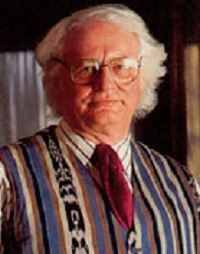 Robert Bly
Robert Bly
1926-2021
Robert Bly (born December 23, 1926) is an American poet, author, activist and leader of the Mythopoetic Men’s Movement.
Bly was born in Lac qui Parle County, Minnesota, to Jacob and Alice Bly, who were of Norwegian ancestry. Following graduation from high school in 1944, he enlisted in the United States Navy, serving two years. After one year at St. Olaf College in Minnesota, he transferred to Harvard University. He graduated in 1950 and spent the next few years in New York.
Beginning in 1954, Bly spent two years at the University of Iowa at the Iowa Writers Workshop, completing a Master’s degree in Fine Arts, along with W.D. Snodgrass, Donald Justice and others. In 1956, he received a Fulbright Grant to travel to Norway and translate Norwegian poetry into English. Bly determined then to start a literary magazine for poetry translation in the United States. The 1950s, ’60s and ’70s introduced many of these poets to the writers of his generation. He also published essays about American poets.
Bly’s early collection of poems, Silence in the Snowy Fields, was published in 1962 and its plain, imagistic style had considerable influence on American verse of the next two decades. The following year, he published “A Wrong Turning in American Poetry,” an essay in which he made a case against the influences of Eliot, Pound, Marianne Moore and William Carlos Williams in favor of the more direct work of writers such as Pablo Neruda, Cesar Vallejo, Juan Ramon Jimenez, Antonio Machado and Rainer Maria Rilke.
In 1966, he won the National Book Award for The Light around the Body. During the 1970s, he published 11 books of poetry, essays and translations, celebrating the power of myth, Indian ecstatic poetry, meditation and storytelling. During the 1980s, he published: Loving a Woman in Two Worlds; The Winged Life: Selected Poems and Prose of Thoreau; The Man in the Black Coat Turns; and A Little Book on the Human Shadow.
Among his most famous works is Iron John: A Book about Men, an international bestseller that has been translated into many languages. The book is credited with starting the Mythopoetic men’s movement in the United States. Bly has taught at the annual Great Mother Conference since 1975.
Bly was the University of Minnesota Library’s 2002 Distinguished Writer. He received The McKnight Foundation’s Distinguished Artist Award in 2000 and the Maurice English Poetry Award in 2002. He has published more than 40 collections of poetry, edited many others and published translations of poetry and prose. His book, The Night Abraham Called to the Stars, was nominated for a Minnesota Book Award. He also edited the prestigious Best American Poetry, 1999.
In February 2008, Bly was named Minnesota’s first poet laureate. In that year he also contributed a poem and an afterword to From the Other World: Poems in Memory of James Wright.
He died on November 21, 2021 in Minneapolis, Minnesota.
Source: http://en.wikipedia.org/wiki/Robert_Bly
 Bibliography
Bibliography
Press your browser’s BACK button to return to the previous page.
 Giovanni Boccaccio
Giovanni Boccaccio
1313-1375
The Italian poet, Giovanni Boccaccio, was most probably born in Tuscany, the illegitimate son of a merchant of Certaldo, who launched him on a commercial career, during which he spent some time at Paris. As a young man, Boccaccio abandoned commerce and the study of canon law. At Naples he began to write stories in verse and prose, mingled in courtly society and fell in love with the noble lady whom he made famous under the name of Fiammetta.
Up until 1350 Boccaccio lived in Florence and in Naples, producing prose tales, pastorals and poems. “The Teseide” is a version in ottava rima of the medieval romance of Palamon and Arcite, which was partly translated by Chaucer in The Knight’s Tale, and is the subject of Fletcher’s Two Noble Kinsmen. “The Filostrato” deals with the loves of Troilus and Cressida, also in great part translated by Chaucer.
After 1350, Boccaccio became a diplomat entrusted with important public affairs, and a scholar devoted to the new learning. During this period, in which he formed a lasting friendship with Francesco Petrarch, Boccaccio, as Florentine ambassador, visited Rome, Ravenna, Avignon and Brandenburg.
In 1358, he completed his great work, The Decameron, begun some 10 years before. During the plague at Florence in 1348, seven ladies and three gentlemen left the city for a country villa and over a period of 10 days told 100 stories. In graceful Italian, Boccaccio selected the plots of his stories from the popular fiction of his day, and especially from the fabliaux that had passed into Italy from France, the matter being medieval while the form is classical. Boccaccio’s originality lay in his narrative skill and in the rich poetical sentiments that adorn his borrowed materials. The two great tendencies running through European literature, the classical and the romantic, work together in The Decameron.
During his last years, Boccaccio lived principally in retirement at Certaldo and would have entered into holy orders, moved by repentance for the follies of his youth, had he not been dissuaded by Petrarch. Boccaccio died at Certaldo on December 21, 1375.
Source: http://www.historyguide.org/ancient/boccaccio.html
 Bibliography
Bibliography
Press your browser’s BACK button to return to the previous page.
 Ancius Boethius
Ancius Boethius
480-525
Anicius Manlius Severinus Boethius, commonly called Boethius (c. 480-524/25 AD), was a philosopher of the early 6th century. He was born in Rome to an ancient and prominent family that included emperors Petronius Maximus and Olybrius and many consuls. Boethius, of the noble Anicia family, entered public life at a young age and was already a senator by the age of 25. Boethius himself was consul in 510 in the kingdom of the Ostrogoths.
Due to his erudition, Boethius entered the service of Theodoric the Great. His earliest documented acts on behalf of the Ostrogothic ruler were to investigate allegations that the paymaster of Theodoric’s Bodyguards had debased the coins of their pay, to produce a water-clock that Theodoric intended to give to King Gundobad of the Burgunds and to recruit a lyre-player to perform for King Clovis of the Franks.
In 522, Boethius accepted the appointment to the position of magister officiorum, the head of all the government and court services. Also in 520, Boethius was working to revitalize the relationship between the Church in Rome and the Church in Constantinople. This may have led to loss of favor.
The following year, however, Boethius fell from power, was imprisoned and eventually executed. The primary sources are in general agreement over the facts of what happened. At a meeting of the Royal Council in Verona, the referandarius Cyprianus accused the ex-consul Caecina Decius Faustus Albinus of treasonous correspondence with Justin I. Boethius leapt to his defense, crying, “The charge of Cyprianus is false, but if Albinus did that, so also have I and the whole senate with one accord done it; it is false, my Lord King.” Cyprianus then also accused Boethius of the same crime, and produced three men who claimed they had witnessed the crime. Boethius and Basilius were arrested. First the pair were detained in the baptistery of a church, then Boethius was exiled to the Ager Calventianus, a distant country estate, where he was put to death.
Source: http://en.wikipedia.org/wiki/Boethius
 Bibliography
Bibliography
Press your browser’s BACK button to return to the previous page.
 Louise Bogan
Louise Bogan
1897-1970
Louise Bogan was born in Livermore, Maine, on August 11, 1897, and was educated at the Girls’ Latin High School and Boston University, which she left without taking a degree. Her first marriage, to Curt Alexander, an Army officer, in 1916, was effectively over by 1918. Their daughter, Maidie, was born Oct. 19, 1917, but was raised by Bogan’s parents. Alexander died in 1920.
In 1923, a year after she received the first of three Guggenheim fellowships (1922, 1933, 1937), her first book of poetry, Body of this Death: Poems, was published. She married poet Raymond Holden in 1925. This was followed by her second book, Dark Summer: Poems, in 1929.
Bogan endured bouts of mental illness from 1931, the year that The New Yorker hired her as poetry editor, a post she carried out impeccably for 38 years, until 1969.
Her third book of poems, The Sleeping Fury, was published in 1937, the year she divorced Holden. This book reflected her experience with love, which grew to include an affair with the American poet, Theodore Roethke.
She became Poetry Consultant to the Library of Congress in 1945-46 and enjoyed increasing recognition for her writing. She won the John Reed Memorial Prize for Poetry in 1930, the Harriet Monroe Award in 1948 and a share of the Bollingen Prize in 1955. Bogan was inducted into the National Institute of Arts and Letters in 1952 and the American Academy of Arts and Letters in 1969. She taught at Arkansas, Brandeis, Chicago and Washington universities, her first critical work, Achievement in American Poetry, 1900-1950, having been published in 1951. Her Collected Poems appeared in 1941 but she made her own selection in The Blue Estuaries: Poems, 1923-1968 in 1968. Late in her life shehe also translated literature from French and German.
She died of a heart attack on February 4, 1970.
Source: http://rpo.library.utoronto.ca/poet/25.html
 Bibliography
Bibliography
Press your browser’s BACK button to return to the previous page.
 Roberto Bolano
Roberto Bolano
1953-2003
Roberto Bolano Avalos (April 28, 1953-July 15, 2003) was a Chilean novelist and poet. In 1999, he won the Romulo Gallegos Prize for his novel, Los detectives salvajes (The Savage Detectives), and in 2008 he was posthumously awarded the National Book Critics Circle Award for Fiction for his novel, 2666.
Bolano was born in Santiago, the son of a truck driver (who was also a boxer) and a teacher. In 1968, he moved with his family to Mexico City, dropped out of school, worked as a journalist and became active in left-wing political causes. For most of his early adulthood, Bolano was a vagabond, living at one time or another in Chile, Mexico, El Salvador, France and Spain. After an interlude in El Salvador, spent in the company of the poet Roque Dalton and the guerrillas of the Farabundo Marti National Liberation Front, he returned to Mexico, living as a bohemian poet.
Bolano moved to Europe in 1977 and finally made his way to Spain, where he married and settled on the Mediterranean coast near Barcelona, working as a dishwasher, campground custodian, bellhop and garbage collector. He worked by day and wrote at night. From the early 1980s he lived in the small Catalan beach town of Blanes.
He continued with poetry before shifting to fiction in his early 40s. However, he continued to think of himself primarily as a poet, and a collection of his verse, spanning 20 years, was published in 2000 under the title, The Romantic Dogs.
Bolano’s death in 2003 came after a long period of declining health.
Source: http://en.wikipedia.org/wiki/Roberto_Bola%C3%B1o
 Bibliography
Bibliography
Press your browser’s BACK button to return to the previous page.
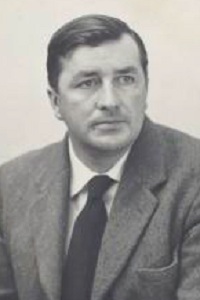 Robert Bolt
Robert Bolt
1924-1995
Robert Oxton Bolt (August 15, 1924-February 21, 1995) was an English playwright and a two-time Oscar-winning screenwriter.
He was born in Sale, Cheshire. At Manchester Grammar School his affinity for Sir Thomas More first developed. He attended the University of Manchester and, after war service, the University of Exeter. For many years he taught English and history at Millfield School and only became a full-time writer at the age of 33 when his play, The Flowering Cherry, was staged in London in 1958.
Although he was best known for his original play, A Man for All Seasons (a depiction of Sir Thomas More’s clash with King Henry VIII over his divorce from Catherine of Aragon), which won awards on the stage and in its film version, most of his writing was screenplays for films or television.
Bolt was known for dramatic works that placed their protagonists in tension with the prevailing society. He won great renown for A Man for All Seasons, his first iteration of this theme, but he developed it in his existential script for Lawrence of Arabia (1962).
Later, with Doctor Zhivago, he invested Boris Pasternak’s novel with the characteristic Bolt sense of narrative and dialogue. The Bounty was Bolt’s first project after a stroke, which affected not only his movement, but his speech. In it, Fletcher Christian takes the “Lawrence” role of a man in tension with his society who, in the process, loses touch with his own identity. The Mission was Bolt’s final film project and once again represented his thematic preoccupations, this time with 18th century Jesuits in South America.
Bolt’s final produced script was Political Animal, later made into the TV movie, Without Warning: The James Brady Story (1991), about the attempted assassination of Ronald Reagan and the struggles of his press secretary, James Brady, to recover from a near-fatal gunshot injury he received in the process. Bolt was initially reluctant to make the film, but after meeting with Brady he felt he could relate to Brady’s struggles with a cerebral injury; thus, a lot of his own experiences recovering from his stroke found their way into the script.
Bolt suffered a heart attack and a stroke that left him paralyzed in 1979. He died aged 70, in Petersfield, Hampshire, England, following a long illness.
Source: http://en.wikipedia.org/wiki/Robert_Bolt
 Bibliography
Bibliography
Press your browser’s BACK button to return to the previous page.
 Marita Bonner
Marita Bonner
1898-1971
Educator and author Marita Odette Bonner was born in Boston, Massachusetts, the daughter of Joseph Bonner, a machinist and laborer, and Mary A. Nowell. Educated in the Brookline, Massachusetts, public schools, Bonner applied to Radcliffe College at the urging of her high school adviser and was one of the few African-American students accepted for admission. She majored in English and comparative literature and founded the Radcliffe chapter of Delta Sigma Theta, a black sorority. A gifted pianist and student of musical composition, Bonner won the Radcliffe song competition in 1918 and 1922. During her last year in college, she taught English at a Cambridge high school. After graduating with a BA in 1922, she taught at the Bluefield Colored Institute in Bluefield, Virginia, until 1924 and at Armstrong High School in Washington, D.C., from 1924 to 1930, when she married William Almy Occomy, a Brown graduate. The couple moved to Chicago, where they raised three children.
During her literary career she published short stories, essays and plays, most of which examined the debilitating effects of economic, racial and sexual prejudice on black Americans. Bonner’s first publication, a short story called “The Hands,” was published in Opportunity in August 1925, and her award-winning essay, “On Being Young – a Woman – and Colored” was published in December of that year in Crisis; these two magazines continued to publish her work.
In her 1928 essay, “The Young Blood Hungers,” a haunting refrain captures the anger and despair of a generation facing economic slavery and brutal racism. In her short story, “Nothing New,” she introduces Frye Street, a fictional neighborhood in Chicago that she describes as running “from freckled-face tow heads to yellow Orientals; from broad Italy to broad Georgia.”
While living in Washington, D.C., Bonner wrote and published several works that won awards from Crisis, including “Drab Rambles” (1927) and “The Young Blood Hungers” (1928). During this time, Bonner wrote and published three plays: The Pot-Maker: A Play to Be Read (1927), The Purple Flower (1928); and Exit an Illusion (1929). The latter two also won Crisis awards.
After her marriage and subsequent move to Chicago, Bonner took a three-year break from publishing, and when she returned she devoted herself exclusively to fiction, publishing her stories under her married name. These stories offer a vivid portrait of black Chicago and its strained interactions with other minorities and with a racist white society. Her first work was a three-part narrative, “A Possible Triad on Black Notes,” published in the July, August and September 1933 issues of Opportunity. “Tin Can,” a two-part narrative, won the 1933 Opportunity literary prize for fiction and was published in the July and August 1934 issues of that magazine.
Bonner’s literary career ended in 1941, the year in which she and her husband joined the First Church of Christ, Scientist. Although the church tenets did not conflict with her writing, Bonner nonetheless devoted her intellectual energy to the church rather than to a literary career. After her children were all in school, Bonner resumed teaching.
Bonner died of complications after a fire in her Chicago apartment.
Source: http://dev.anb.org/article/opr/t0001/e1010
 Bibliography
Bibliography
Press your browser’s BACK button to return to the previous page.
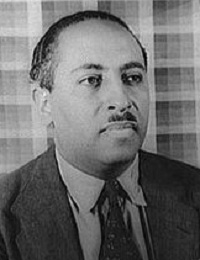 Arna Bontemps
Arna Bontemps
1902-1973
Arnaud “Arna” Wendell Bontemps (October 13, 1902-June 4, 1973) was an American poet and a noted member of the Harlem Renaissance.
Bontemps was born in the city of Alexandria, Louisiana, to Charlie Bontemps and Marie Pembrooke Bontemps. When he was three, his family moved to the Watts district of Los Angeles, California, in the Great Migration of blacks out of the South to cities of the North, Midwest and West. He graduated from Pacific Union College in California in 1923. After graduation he went to New York to teach at Harlem Academy. In New York he became an important contributor to the Harlem Renaissance, where he met many lifelong friends, including Countee Cullen and Langston Hughes. Hughes became a role model, collaborator and dear friend to Bontemps.
He began writing while a student at Pacific Union College, where he majored in English and minored in history, and later became the author of many children’s books. His critically most important work, The Story of the Negro (1948), received the Jane Addams Book Award and was also a Newbery Honor Book. He is probably best known for the 1931 novel, God Sends Sunday, the 1936 novel, Black Thunder, and the 1966 anthology, Great Slave Narratives. He also wrote the 1946 play, St. Louis Woman, with Countee Cullen.
In 1943, after graduating from the University of Chicago with a master’s degree in library science, Bontemps was appointed head librarian at Fisk University in Nashville, Tennessee. He held that position for 22 years and developed important collections and archives of African-American literature and culture, namely the Langston Hughes Renaissance Collection. After retiring from the Fisk University in 1966, he worked at the University of Illinois (Chicago Circle) and Yale University, where he served as curator to the James Weldon Johnson Collection. Through his librarianship and bibliographic work, Bontemps has become a leading figure in establishing African-American literature as a legitimate object of study and preservation.
Bontemps died on June 4, 1973, in Nashville, from a heart attack while working on his autobiography.
Source: http://en.wikipedia.org/wiki/Arna_Bontemps
 Bibliography
Bibliography
Press your browser’s BACK button to return to the previous page.
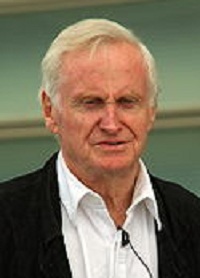 John Boorman
John Boorman
1933-
John Boorman (born January 18, 1933) is a British filmmaker who is a longtime resident of Ireland and is best known for his feature films, such as Point Blank, Deliverance, Zardoz, Excalibur, The Emerald Forest, Hope and Glory, The General and The Tailor of Panama.
Boorman was born in Shepperton, Surrey, England, the son of Ivy (nee Chapman) and George Boorman. He was educated at the Salesian School in Chertsey, Surrey, even though his family was not Roman Catholic. He has directed a total of 22 movies.
Boorman first began by working as a drycleaner and journalist in the late 1950s. He ran the newsrooms at Southern Television in Southampton and Dover before moving into TV documentary filmmaking, eventually becoming the head of the BBC’s Bristol-based Documentary Unit in 1962.
Capturing the interest of producer David Deutsch, he was offered the chance to direct a film: Catch Us if You Can (1965). Boorman was drawn to Hollywood to make Point Blank (1967). He next directed Hell in the Pacific (1968). Returning to the UK, he made Leo the Last (1970).
Boorman achieved much greater resonance with Deliverance (1972). A wide variety of films followed: Zardoz (1973); Exorcist II: The Heretic (1977); Excalibur (1981); Hope and Glory (1987); The Emerald Forest (1985); Beyond Rangoon (1995); The Tailor of Panama (2000); The General (1998); and The Tiger’s Tail (2006).
Source: http://en.wikipedia.org/wiki/John_Boorman
 Bibliography
Bibliography
Press your browser’s BACK button to return to the previous page.
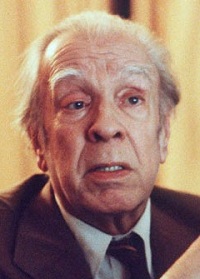 Jorge Luis Borges
Jorge Luis Borges
1899-1986
Jorge Francisco Isidoro Luis Borges Acevedo (August 24, 1899-June 14, 1986), known as Jorge Luis Borges, was an Argentine writer, essayist, poet and translator born in Buenos Aires. His most famous books, Ficciones (1944) and The Aleph (1949), are compilations of short stories interconnected by common themes such as dreams, labyrinths, libraries, mirrors, animals, fictional writers, religion and God. His works have contributed to the genre of science fiction as well as the genre of magic realism, a genre that reacted against the realism/naturalism of the 19th century.
In 1914 his family moved to Switzerland, where he attended school, receiving his baccalaureat from the College de Geneve in 1918. The family travelled widely in Europe, including stays in Spain. On his return to Argentina in 1921, Borges began publishing his poems and essays in surrealist literary journals. He also worked as a librarian and public lecturer. In 1955, he was appointed director of the National Public Library (Biblioteca Nacional) and professor of Literature at the University of Buenos Aires. In 1961 he came to international attention when he received the first-ever Prix International, sharing the award with Samuel Beckett. In 1971, he won the Jerusalem Prize. Borges had dedicated his final work, Los Conjurados (The Conspirators), to the city of Geneva, Switzerland, and it was there, in 1986, that he chose to die.
His international fame was consolidated in the 1960s, aided by the “Latin American Boom” and the success of Gabriel Garcia Marquez’s Cien Anos de Soledad (One Hundred Years of Solitude).
Jorge Luis Borges died of liver cancer in 1986 in Geneva.
Source: http://en.wikipedia.org/wiki/Jorge_Luis_Borges
 Bibliography
Bibliography
Press your browser’s BACK button to return to the previous page.
 George Borrow
George Borrow
1803-1881
George Borrow (1803-1881) was born in East Dereham, Norfolk, had part of his education at Norwich Grammar School and spent much of his life in East Anglia. He became a bestselling author with The Bible in Spain (1843), a brilliant account of five remarkable years spent in the Peninsula, and followed this with two semi-autobiographical works: Lavengro (1851), meaning “Word-Master,” and its sequel, The Romany Rye/The Gypsy Gentleman (1857). His last major work was Wild Wales (1862), one of the best books of its time about Wales. He is still admired for his inspirational writings about Gypsies, and for his evocation of an earlier England, that of 1825, and of Wales in the 1850s, the latter colored by his enthusiasm for its medieval literature, and his abhorrence of its “dark, satanic mills.”
Borrow did not have a university education but was a notable linguist, not so much concerned with perfecting his knowledge of any language as with collecting some knowledge of a large number – there is evidence of some 100 languages that he could either speak or write, or from which he left translations, or that in some other way interested him.
He lived in London from 1860 until about 1874, but after his wife’s death in 1869 seems to have lost much of his zest and returned to Oulton in Suffolk, where he died in 1881.
Source: http://www.clough5.fsnet.co.uk/gb.html
 Bibliography
Bibliography
Press your browser’s BACK button to return to the previous page.
 James Boswell
James Boswell
1740-1795
James Boswell was an advocate, traveler, journalist, Scotsman and author of The Life of Johnson. Born on October 29, 1740, in Edinburgh, he became known for his friendship with Dr. Johnson, his Account of Corsica (1768) and, in the last years of his life, for the 1791 biography of his friend, Samuel Johnson.
During the course of his life he met an amazing number of the great and powerful, of the literati, the philosophers, academics and advocates of his time. In 1769 he married his cousin, Margareth Montgomerie, and in 1782 he became the 9th Laird of Auchinleck, his ancestral home. He died in May 1795 in London, following weeks of serious illness.
Discovered by scholars in the 1920s, Boswell’s long-lost journals were one of the major literary discoveries of the 20th century. In his detailed and honest journal entries from the early 1760s until shortly before his death, we get his unique first-hand observations of life and personalities in the second half of the 18th century. Had he not written The Life of Johnson, his journals would still secure his fame for posterity.
Source: http://www.jamesboswell.info/
 Bibliography
Bibliography
Press your browser’s BACK button to return to the previous page.
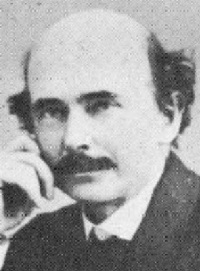 Dion Boucicault
Dion Boucicault
1820-1890
Dionysius Lardner Boursiquot (December 26, c. 1820-September 18, 1890), commonly known as Dion Boucicault, was an Irish actor and playwright famed for his melodramas. By the later part of the 19th century, Boucicault had become known on both sides of the Atlantic as one of the most successful actor-playwright-managers then in the English-speaking theatre.
Boucicault was born and educated in Dublin, where he lived on Gardiner Street. He went to London and was enrolled at University College School at the age of 13 and also studied for a year at the University of London.
After a year in London, Boucicault left to pursue acting in Cheltenham, using the stage name Leo Moreton. Soon afterward he began to write plays.
His first play, A Legend of the Devil’s Dyke, opened in Brighton in 1838. Three years later he found immediate success as a dramatist with London Assurance. He rapidly followed this with a number of other plays, among the most successful of the early ones being The Bastile (1842), Old Heads and Young Hearts (1844), The School for Scheming (1847), Confidence (1848) and The Knight Arva (1848), as well as his very successful The Corsican Brothers (1852) and Louis XI (1855).
In his play, The Vampire (1852), Boucicault made his debut as a leading actor as the vampire “Sir Alan Raby.” In 1854, he wrote and played the title character in Andy Blake; or the Irish Diamond.
From 1854 to 1860, Boucicault resided in the United States. He also wrote many successful plays there, acting in most of them. These included the popular Jessie Brown; or the Relief of Lucknow, in 1858.
In the summer of 1859, Boucicault took over as manager of Burton’s New Theatre on Broadway. After extensive remodeling, he renamed his new showplace the Winter Garden Theatre. There on December 5, 1859, he premiered his new sensation, the anti-slavery potboiler, The Octoroon, in which he also starred. This was the first play to treat seriously of the Black American population.
On his return to England, he produced at the Adelphi Theatre a dramatic adaptation of Gerald Griffin’s novel, The Collegians, entitled The Colleen Bawn. Boucicault later adapted Washington Irving’s Rip van Winkle.
Boucicault’s next marked success was at the Princess’ Theatre, London, in 1864 with Arrah-na-Pogue. This, and his admirable creation of “Conn” in his play, The Shaughraun (1874), won him the reputation of being the best “stage Irishman” of his time.
In 1875, Boucicault returned to New York City and finally made his home there. He wrote the melodrama, Contempt of Court (1879), but he paid occasional visits to London, where his last appearance was made in his play, The Jilt, in 1885. The Streets of London and After Dark were two of his late successes as a dramatist.
Boucicault died in 1890 in New York City.
Source: http://en.wikipedia.org/wiki/Dion_Boucicault
 Bibliography
Bibliography
Press your browser’s BACK button to return to the previous page.
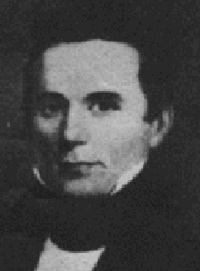 Elias Boudinot
Elias Boudinot
1802?-1839
Elias Boudinot was the college-educated Cherokee Indian, son of Oo-watie, brother of Stand Watie and nephew of Major Ridge, who attended the Moravian School established by James Vann at Spring Place. While attending the American Board College in Cornwall, Connecticut, he met and married Harriet Gold. This marriage would greatly influence him, since he discovered that a “virulent racism” existed in white society when the town forced the school to close because of the marriage.
In 1826, Boudinot began raising funds for the nascent printing operations of the Cherokee Nation. The first issue of The Cherokee Phoenix was published on February 21, 1828 and Boudinot was listed as editor at the age of 24. Changing political climates brought more settlers into the Cherokee Nation beginning in 1830, which began to sway Boudinot in favor of removal. When he resigned from the paper in 1832 over differences of opinion with Cherokee Principal Chief John Ross, he was fully in favor of removal. During the signing of the Treaty of New Echota on December 29, 1935, Boudinot made an impassioned plea for removal, but most of his fellow Cherokee viewed him as a traitor. After his wife Harriet died in 1836 he moved west before “The Trail of Tears.”
Boudinot was killed in the Cherokee Nation West in June 1839 for signing the Treaty of New Echota.
Source: http://ngeorgia.com/ang/Elias_Boudinot
 Bibliography
Bibliography
Press your browser’s BACK button to return to the previous page.
 Philippe Bourgois
Philippe Bourgois
1956-
Philippe Bourgois is a Richard Perry University Professor of Anthropology & Family and Community Medicine at the University of Pennsylvania. He also served as founding Chair of the Department of Anthropology, History and Social Medicine at the University of California, San Francisco, from 1998 through 2003. His most recent book, Righteous Dopefiend, was co-authored with Jeff Schonberg and was published in June 2009 by the University of California Press in its “Public Anthropology” series. It is based on 12 years of participant-observation research with a social network of homeless heroin injectors and crack smokers surviving on the streets of San Francisco six blocks from his home. The book won the 2010 Anthony Leeds Prize for Urban Anthropology.
Bourgois’ previous book was based on five years of living with his family next to a crack house in East Harlem during the mid-1980s through the early 1990s: In Search of Respect: Selling Crack in El Barrio. It won the 1996 C. Wright Mills Award and the 1997 Margaret Mead Award, among others. He has also conducted research in Central America on ethnicity and social unrest and is the author of Ethnicity at Work: Divided Labor on a Central American Banana Plantation (1989), which was based on two years of living in the workers’ barracks of a Chiquita Brands banana plantation spanning the borders of Costa Rica and Panama.
Bourgois received a bachelor’s degree in Social Studies from Harvard College in 1978. He was awarded a master’s degree in Development Economics (1980) and a Ph.D. in Anthropology (1985) from Stanford University. He spent a year as a postdoctoral fellow at the Ecole Normale Superieure in Paris in 1985-86.
In addition to his three ethnographies, Bourgois has published four edited volumes, including Violence in War and Peace (2004). He published an ethnographic study of Harlem crack dealers, Selling Crack in El Barrio (2003). Bourgois is also the author of more than 150 academic and popular press articles addressing segregation in the U.S. inner city, homelessness, gender violence, immigration and labor conflict, substance abuse, HIV and intimate violence. He also published an article about his father’s escape from Auschwitz, “Missing the Holocaust.”
Source: http://en.wikipedia.org/wiki/Philippe_Bourgois
 Bibliography
Bibliography
Press your browser’s BACK button to return to the previous page.
 Randolph Bourne
Randolph Bourne
1886-1918
Randolph Silliman Bourne (May 30, 1886-December 22, 1918) was a progressive writer and public intellectual born in Bloomfield, New Jersey, and a graduate of Columbia University. Bourne is best known for his essays, especially his unfinished work, “The State,” discovered after his death.
Bourne’s articles appeared in The Seven Arts and The New Republic, among other journals of the day. He was born with a deformed face and essentially a hunchback. He chronicled his experiences in his essay titled, “The Handicapped.”
During World War I, American progressives, Bourne included, found themselves split and pitted against each other. The two factions that emerged were the pro-war faction, led by the educational theorist John Dewey, and the anti-war faction, of which both Bourne and other famous progressives like Jane Addams were a part. Bourne was a student of Dewey at Columbia, but he took issue with Dewey’s idea of using the war as a tool with which to spread democracy. In his pointedly titled 1918 essay, “Twilight of Idols,” he invoked the progressive pragmatism of Dewey’s contemporary William James to argue that that America was using democracy as an end to justify the war, but that democracy itself was never examined. While he had been a follower of Dewey originally, he felt that Dewey had betrayed his democratic ideals by focusing only on the facade of a democratic government rather than on the ideas behind democracy that Dewey had once professed to respect.
Bourne was greatly influenced by Horace Kallen’s 1915 essay, “Democracy Versus the Melting-Pot,” and argued, like Kallen, that Americanism ought not to be associated with Anglo-Saxonism. In his 1916 article, “Trans-National America,” Bourne argued that the U.S. should accommodate immigrant cultures into a “cosmopolitan America,” instead of forcing immigrants to assimilate to Anglophilic culture.
Bourne died in the Spanish flu epidemic shortly after the Armistice of World War I. His ideas have been influential in the shaping of postmodern ideas of cosmopolitanism and multiculturalism, and recent intellectuals such as David Hollinger have written extensively on Bourne’s ideology. John Dos Passos, an influential American modernist writer, eulogized Bourne in the chapter, “Randolph Bourne,” of his novel 1919 and drew heavily on the ideas presented in the chapter, “War Is the Health of the State.”
Source: http://en.wikipedia.org/wiki/Randolph_Bourne
 Bibliography
Bibliography
Press your browser’s BACK button to return to the previous page.
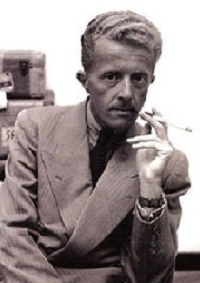 Paul Bowles
Paul Bowles
1910-1999
Paul Frederic Bowles (December 30, 1910-November 18, 1999) was an American expatriate composer, author and translator. Following a cultured middle-class upbringing in New York City, during which he displayed a talent for music and writing, Bowles pursued his education at the University of Virginia before making various trips to Paris in the 1930s. He studied music with Aaron Copland and in New York wrote music for various theatrical productions, as well as other compositions. He achieved critical and popular success with the publication in 1949 of his first novel, The Sheltering Sky, set in what was known as French North Africa, which he had visited in 1931.
In 1947, Bowles settled in Tangier, Morocco, and his wife, Jane Bowles, followed in 1948. Except for winters spent in Sri Lanka (then known as Ceylon) during the early 1950s, Tangier was his home for the next 52 years, the remainder of his life.
Paul Bowles died in 1999 at the age of 88. His ashes are buried in Lakemont Cemetery in upstate New York.
Source: http://en.wikipedia.org/wiki/Paul_Bowles
 Bibliography
Bibliography
Press your browser’s BACK button to return to the previous page.
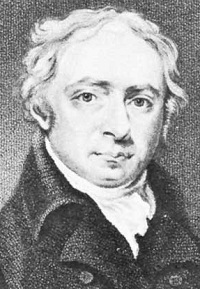 William Lisle Bowles
William Lisle Bowles
1762-1850
William Lisle Bowles (September 24, 1762-April 7, 1850) was an English poet and critic. He was born at King’s Sutton, Northamptonshire, where his father was vicar. At the age of 14 he entered Winchester College, the headmaster at the time being Dr. Joseph Warton. In 1781, Bowles left as captain of the school and went on to Trinity College, Oxford, where he had won a scholarship. Two years later he won the chancellor’s prize for Latin verse. In 1789, he published, in a very small quarto volume, Fourteen Sonnets, which were received with extraordinary favor.
After taking his degree at Oxford, Bowles entered the church and was appointed in 1792 as vicar of Chicklade in Wiltshire. In 1797 he received the vicarage of Dumbleton in Gloucestershire, and in 1804 became vicar of Bremhill in Wiltshire, where he wrote the poem seen on Maud Heath’s statue. In the same year he was collated by Bishop Douglas to a prebendal stall in Salisbury Cathedral. In 1818, he was made chaplain to the Prince Regent and, in 1828, he was elected residentiary canon of Salisbury.
The longer poems published by Bowles are not of a very high standard. The most extensive were: “The Spirit of Discovery” (1804); “The Missionary of the Andes” (1815); “The Grave of the Last Saxon” (1822); and “St. John in Patmos” (1833).
Bowles is perhaps more celebrated as a critic than as a poet. Among other prose works from his prolific pen was a Life of Bishop Ken (1830-1831); Coombe Ellen and St. Michael’s Mount (1798); The Battle of the Nile (1799); and The Sorrows of Switzerland (1801).
Bowles also enjoyed considerable reputation as an antiquary, his principal work in that department being Hermes Britannicus (1828).
His Poetical Works were collected in 1855 as part of the Library Edition of the British Poets, with a memoir by George Gilfillan.
Source: http://en.wikipedia.org/wiki/William_Lisle_Bowles
 Bibliography
Bibliography
Press your browser’s BACK button to return to the previous page.
 William Boyd
William Boyd
1952-
William Boyd was born in Accra, Ghana, on March 7, 1952. He was educated at Gordonstoun School, Glasgow University and Jesus College, Oxford. His first novel, A Good Man in Africa (1981), was published while he was a lecturer in English at St. Hilda’s College, Oxford, and won the Whitbread First Novel Award and a Somerset Maugham Award. Boyd was selected in 1983 as one of the 20 “Best of Young British Novelists” in a promotion run by Granta magazine and the Book Marketing Council.
His other novels include: An Ice-Cream War (1982), winner of The Mail on Sunday/John Llewellyn Rhys Prize; Brazzaville Beach (1990), which won the James Tait Black Memorial Prize (for fiction) and the McVitie’s Prize for Scottish Writer of the Year; and The Blue Afternoon (1993), which won The Sunday Express Book of the Year Award and The Los Angeles Times Book Prize (Fiction). Armadillo (1998) is set in London and follows the adventures of insomniac loss-adjustor Lorimer Black. The book was adapted for television as a four-part series screened by the BBC in 2001, with a screenplay by the author. The publication of Boyd’s book, Nat Tate: An American Artist 1928-1960 (1998), the “biography” of a neglected genius, reportedly fooled a number of prominent art critics who claimed to have heard of the wholly fictional painter.
A former television critic for The New Statesman (1981-3) magazine, Boyd is also a scriptwriter. He wrote the television screenplays for Good and Bad at Games (1983), Dutch Girls (1985) and Scoop (1987), as well as the screenplays for film versions of two of his own books, A Good Man in Africa and Stars and Bars. He also wrote and directed the World War I drama, The Trench, first screened in 1999. A new radio play, the ghost story A Haunting, was first broadcast by BBC Radio 4 in December 2001.
Boyd became a Fellow of the Royal Society of Literature in 1983. His eighth novel, Any Human Heart (2002), is a history of the 20th century told through the fictional journals of novelist Logan Mountstuart. In 2004, Fascination, a new collection of short stories, was published and, in 2005, a collection of nonfiction, Bamboo. His latest books are: Restless (2006), set in World War II, and winner of the 2006 Costa Novel Award; The Dream Lover (2008), a further collection of short stories; and his latest novel, Ordinary Thunderstorms (2009).
Source: https://en.wikipedia.org/wiki/William_Boyd_(writer)
 Bibliography
Bibliography
Press your browser’s BACK button to return to the previous page.
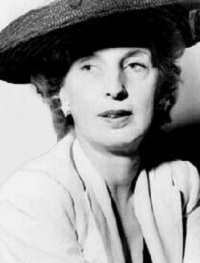 Kay Boyle
Kay Boyle
1902-1992
Kay Boyle (February 19, 1902-December 27, 1992) was an American writer, educator and political activist.
The granddaughter of a publisher, Kay Boyle was born in St. Paul, Minnesota, and grew up in several cities but principally in Cincinnati, Ohio. Her father, Howard Peterson Boyle, was a lawyer, but her greatest influence came from her mother, Katherine Evans, a literary and social activist who believed that the wealthy had an obligation to help the less well-off. In later years, Kay Boyle championed integration and civil rights. She also advocated banning nuclear weapons and American withdrawal from the Vietnam War.
Boyle was educated at the exclusive Shipley School in Bryn Mawr, Pennsylvania, then studied architecture at the Ohio Mechanics Institute in Cincinnati. Interested in the arts, she studied violin at the Cincinnati Conservatory of Music before settling in New York City in 1922, where she found work as a writer/editor with a small magazine. That same year, she met and married a French exchange student, Richard Brault, and moved to France in 1923. This resulted in her staying in Europe for the better part of the next 20 years. After having lived in France, Austria, England and in Germany after World War II, Boyle returned to the United States.
Boyle was a writer in residence at the New York City Writer’s Conference at Wagner College in 1962. In 1963, she accepted a creative writing position on the faculty of San Francisco State College, where she remained until 1979. During this period she became heavily involved in political activism. She traveled to Cambodia in 1966 as part of the “Americans Want to Know” fact-seeking mission. She participated in numerous protests and, in 1967, was arrested twice and imprisoned. In 1968, she signed the “Writers and Editors War Tax Protest” pledge, vowing to refuse tax payments in protest against the Vietnam War. In her later years, she became an active supporter of Amnesty International and worked for the NAACP. After retiring from San Francisco State College, Boyle held several writer-in-residence positions for brief periods of time.
Boyle died at a California seniors home in Mill Valley, California, in 1992. In her lifetime, Kay Boyle published more than 40 books, including 14 novels, eight volumes of poetry, 11 collections of short fiction, three children’s books and French-to-English translations and essays.
Source: http://en.wikipedia.org/wiki/Kay_Boyle
 Bibliography
Bibliography
Press your browser’s BACK button to return to the previous page.
 T.C. Boyle
T.C. Boyle
1948-
Tom Coraghessan Boyle (born Thomas John Boyle, also known as T.C. Boyle, December 2, 1948) is an American novelist and short story writer. Since the mid-1970s, he has published 12 novels and more than 100 short stories. He won the PEN/Faulkner Award in 1988 for his third novel, World’s End, which recounts 300 years in upstate New York.
Boyle grew up in Peekskill, New York, received a B.A. from the State University of New York at Potsdam, and his M.F.A. and Ph.D. from the University of Iowa. He is Distinguished Professor of English at the University of Southern California.
His novels include: World’s End (1987); The Road to Wellville (1993); and The Tortilla Curtain (1995, winner of France’s Prix Medicis etranger).
Boyle has published eight collections of short stories, including: Descent of Man (1979), Greasy Lake (1985), If the River Was Whiskey (1989) and Without a Hero (1994). His short stories regularly appear in the major American magazines, including The New Yorker, Harper’s, Esquire, The Atlantic Monthly and Playboy.
Source: http://en.wikipedia.org/wiki/T._Coraghessan_Boyle
 Bibliography
Bibliography
Press your browser’s BACK button to return to the previous page.
 John Boyne
John Boyne
1971-
John Boyne (born April 30, 1971, in Dublin) is an Irish novelist.
He was educated at Terenure College before heading to Trinity College, Dublin, and studied Creative Writing at the University of East Anglia, where he won the Curtis Brown Prize. But it was during his time at Trinity that he began to get published. To pay his way at that stage of his career, he worked at Waterstone’s, typing up his drafts by night.
Boyne is the author of nine novels, as well as a number of short stories that have been published in various anthologies and broadcast on radio and television. The Boy in the Striped Pyjamas, which to date has sold more than five million copies worldwide, is a New York Times Bestseller and a film adaptation was released in September 2008.
His most recent children’s novel, Noah Barleywater Runs Away, reached No. 1 on the Irish Bestseller Chart in October 2010. His seventh novel for adults, The Absolutist, was published in the UK in May 2011 and was serialized on BBC Radio 4.
Boyne resides in Dublin.
Source: http://en.wikipedia.org/wiki/John_Boyne
 Bibliography
Bibliography
Press your browser’s BACK button to return to the previous page.
 Ray Bradbury
Ray Bradbury
1920-2012
Ray Douglas Bradbury (August 22, 1920-June 5, 2012) was an American fantasy, horror, science fiction and mystery writer.
Bradbury was born in Waukegan, Illinois, to Esther Moberg Bradbury, a Swedish immigrant, and Leonard Spaulding Bradbury, a power and telephone lineman. He was the younger brother of twin boys, one of whom died in 1918. His paternal grandfather and great-grandfather were newspaper publishers.
In his youth, he spent much time in the Carnegie Library in Waukegan, Illinois, reading such authors as H.G. Wells, Jules Verne and his favorite author, Edgar Rice Burroughs, who wrote novels such as Tarzan of the Apes and The Warlord of Mars. He loved Burroughs’ The Warlord of Mars so much that at the age of 12 he wrote his own sequel. He used this library as a setting for much of his novel, Something Wicked This Way Comes, and depicted Waukegan as “Green Town” in some of his other semi-autobiographical novels – Dandelion Wine, Farewell Summer – as well as in many of his short stories.
Bradbury graduated from Los Angeles High School, where he took poetry and short story writing courses that furthered his interest in writing, but he did not attend college. Instead, he sold newspapers at the corner of South Norton Avenue and Olympic Boulevard. It was in UCLA’s Powell Library, in a study room with typewriters for rent, that Bradbury wrote his classic story of a book-burning future, Fahrenheit 451.
Ray Bradbury had the freedom of starting his writing career when he was rejected admission into the military (bad eyesight) during World War II. Having been influenced by science fiction heroes like Flash Gordon and Buck Rogers, Bradbury began to publish science fiction stories in fanzines in 1938. His first published story was “Hollerbochen’s Dilemma,” which appeared in the fanzine Imagination! in January 1938.
Bradbury’s first paid piece, “Pendulum,” written with Henry Hasse, was published in the pulp magazine Super Science Stories in November 1941, for which he earned $15. He became a full-time writer by the end of 1942. His first collection of short stories, Dark Carnival, was published in 1947 by Arkham House, a small press in Sauk City, Wisconsin.
Besides his fiction work, Bradbury wrote many short essays on the arts and culture, attracting the attention of critics in this field. Bradbury also hosted “The Ray Bradbury Theater,” which was based on his short stories. Bradbury was a consultant for the American Pavilion at the 1964 New York World’s Fair and the original exhibit housed in Epcot’s Spaceship Earth geosphere at Walt Disney World. In the 1980s, he moved his writings to detective fiction.
He died on June 5, 2012.
Source: http://en.wikipedia.org/wiki/Ray_Bradbury
 Bibliography
Bibliography
Press your browser’s BACK button to return to the previous page.
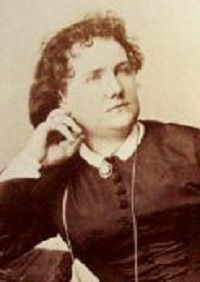 Mary Elizabeth Braddon
Mary Elizabeth Braddon
1835-1915
Mary Elizabeth Braddon (October 4, 1835-February 4, 1915) was a British Victorian-era popular novelist. She is best known for her 1862 sensation novel, Lady Audley’s Secret.
Born in London, England, Braddon was privately educated. Her mother, Fanny, separated from her father, Henry, in 1840, when Mary was three. When Mary was 10 years old, her brother Edward Braddon left for India and later Australia, where he became Premier of Tasmania. Mary worked as an actress for three years in order to support herself and her mother.
Braddon was an extremely prolific writer, producing more than 80 novels with very inventive plots. The most famous one is Lady Audley’s Secret (1862), which won her recognition as well as fortune. The novel has been in print ever since its publication and has been dramatized and filmed several times.
Braddon also founded Belgravia magazine (1866), which presented readers with serialized sensation novels, poems, travel narratives and biographies, as well as essays about fashion, history and science. The magazine was accompanied by lavish illustrations and offered readers a source of literature at an affordable cost. She also edited Temple Bar magazine. Braddon’s legacy is tied to the sensation fiction of the 1860s.
She died on February 4, 1915, in Richmond, Surrey.
Source: http://en.wikipedia.org/wiki/Mary_Elizabeth_Braddon
 Bibliography
Bibliography
Press your browser’s BACK button to return to the previous page.
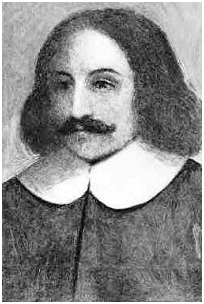 William Bradford
William Bradford
1590-1657
William Bradford was born in 1590 in the small farming community of Austerfield, Yorkshire. Orphaned both from parents and grandparents, he and older sister, Alice, were raised by their uncle, Robert Bradford. William was a sickly boy and by the age of 12 had taken to reading the Bible. As he began to come of age he became acquainted with the ministry of Richard Clyfton and John Smith, around which the Separatist churches of the region would eventually form in about 1606. His family was not supportive of his moves and, by 1607, the Church of England was applying pressure to extinguish these religious sects. Bradford, at the age of 18, joined with the group of Separatists that fled from England in fear of persecution, arriving in Amsterdam in 1608. A year later he migrated with the rest of the church to the town of Leiden, Holland, where they remained for 11 years.
By 1620, when a segment of the church had decided to set off for America on the Mayflower, Bradford, now 30, sold his house in Leiden.
John Carver was elected governor of Plymouth and remained governor until his death a year later in April 1621. Bradford was then elected governor and was re-elected nearly every year thereafter. In 1623, he married the widow Alice (Carpenter) Southworth. Bradford was the head of the government of Plymouth, oversaw the courts, the colony’s finances, corresponded with investors and neighbors, formulated policy with regard to foreigners, Indians and law, and so had a very active role in the running of the entire Colony.
Beginning in 1630, he started writing a history of the Plymouth Colony, which is now published under the title Of Plymouth Plantation. A number of his letters, poems, conferences and other writings have survived.
William Bradford died on May 9, 1657, at the age of 68.
http://www.mayflowerhistory.com/Passengers/WilliamBradford.php
 Bibliography
Bibliography
Press your browser’s BACK button to return to the previous page.
 James Bradley
James Bradley
1954-
James Bradley (born 1954) is an American author, specializing in historical nonfiction chronicling the Pacific theatre of World War II. His father, John Bradley, was one of six men who became famous for being photographed raising the American flag on Mt. Suribachi. That photograph has gone on to be one of the most duplicated and reproduced photos ever taken.
In 2000, Bradley published Flags of Our Fathers, written with author Ron Powers, which tells the story of five U.S. Marines and a Navy corpsman (his father, John Bradley) raising the American flag during the Battle of Iwo Jima.
In 2003, he published Flyboys: A True Story of Courage. That book tells the story of an air raid that took place during the Battle of Iwo Jima, some 150 miles away, when U.S. warplanes bombed the small communications outpost on Chichi Jima.
In 2009, he published his third New York Times bestselling book, The Imperial Cruise. It concerns the 1905 diplomatic mission led by then-Secretary of War William Howard Taft and Alice Roosevelt, as well as the larger implications of President Theodore Roosevelt’s foreign policy, particularly with regard to Japan.
Source: http://en.wikipedia.org/wiki/James_Bradley_%28author%29
 Bibliography
Bibliography
Press your browser’s BACK button to return to the previous page.
 Anne Bradstreet
Anne Bradstreet
1612-1672
One of the greatest poets of the 17th century, Anne Bradstreet was born in Northamptonshire, England, ca. 1612-13, daughter to Thomas Dudley, a clerk, and Dorothy Yorke. By 1619 Dudley became steward to the earl of Lincolnshire at Sempringham, and three years later acquired Anne’s future husband, Simon Bradstreet, as an assistant, freshly graduated from Cambridge University. After a short separation when the Dudleys and Bradstreet left the earl’s service for different positions, Anne and Simon married in 1628 and lived in the household of the countess of Warwick until they emigrated – with the Dudleys – on a ship named the Arbella to America. Anne was only 18 years old but had benefited from a good education in the noble households in which she had stayed. She was a firm Puritan in religion.
After short stays in Salem, Charlestown and Newtown (now Cambridge), they all settled in Ipswich. Here Bradstreet had eight children in an exceptionally happy marriage and wrote many of the poems that were eventually published in The Tenth Muse (1650) after her brother-in-law surreptitiously took her manuscript back with him to England and had it printed without her knowledge. The Bradstreets moved to Andover, Massachusetts, in the mid-1640s and Anne lived until her death in 1672. Six years after her death a second edition of her poems appeared, Several Poems (1678), described as “Corrected by the Author, and enlarged by an Addition of several other Poems found amongst her Papers after her Death.”
Source: http://rpo.library.utoronto.ca/poet/27.html
 Bibliography
Bibliography
Press your browser’s BACK button to return to the previous page.
 Kenneth Branagh
Kenneth Branagh
1960-
Kenneth Charles Branagh (born December 10, 1960) is an actor and film director from Northern Ireland. He is best known for directing and starring in several film adaptations of William Shakespeare’s plays, including Henry V (1989), Much Ado about Nothing (1993), Hamlet (1996), Love’s Labours Lost (2000) and As You Like It (2006).
He has also starred in numerous other films and television series, including: Fortunes of War (1987), Wild Wild West (1999), The Road to El Dorado (2000), Conspiracy (TV, 2001), Harry Potter and the Chamber of Secrets (2002), Warm Springs (TV, 2005), Valkyrie (2008), Wallander (TV series, 2008-present) and My Week with Marilyn (2011) as Laurence Olivier. He has directed such notable films as Dead Again (1991), Swan Song (1992), Mary Shelley’s Frankenstein (1994), The Magic Flute (2006), Sleuth (2007) and the action film, Thor (2011).
Source: http://en.wikipedia.org/wiki/Kenneth_Branagh
 Bibliography
Bibliography
Press your browser’s BACK button to return to the previous page.
 Richard Brautigan
Richard Brautigan
1935-1984
Richard Gary Brautigan (January 30, 1935-c. September 14, 1984) was an American novelist, poet and short story writer. His work often employs black comedy, parody and satire. He is best known for his 1967 novel, Trout Fishing in America.
Brautigan was born in Tacoma, Washington, the only child to Bernard Frederick “Ben” Brautigan Jr., a factory worker and laborer, and Lulu Mary “Mary Lou” Keho, a waitress. In May 1934, eight months prior to his birth, Bernard and Mary Lou separated. He was raised in poverty and his novel, So the Wind Won’t Blow It All Away, is loosely based on childhood experiences.
On September 12, 1950, Brautigan enrolled at South Eugene High School, having graduated from Woodrow Wilson Junior High School. He was a writer for his high school newspaper, South Eugene High School News. On December 19, 1952, Brautigan’s first published poem, “The Light,” appeared in the school newspaper. Brautigan graduated with honors from high school on June 9, 1953.
Moving to San Francisco, Brautigan sought to establish himself as a writer. His first published book was The Return of the Rivers (1958), a single poem, followed by two collections of poetry: The Galilee Hitch-Hiker (1958) and Lay the Marble Tea (1959). Brautigan was also a writer for Change, an underground newspaper.
In the summer of 1961, while camping in southern Idaho with his wife and daughter, Brautigan completed the novels A Confederate General from Big Sur and Trout Fishing in America. A Confederate General from Big Sur was his first published novel and met with little critical or commercial success. But, when Trout Fishing in America was published in 1967, Brautigan was catapulted to international fame.
During the 1960s, Brautigan published four collections of poetry as well as another novel, In Watermelon Sugar (1968). In the spring of 1967, he was Poet-in-Residence at the California Institute of Technology. During this year, he published All Watched Over by Machines of Loving Grace, a chapbook published by The Communication Company. From 1968 to 1970, Brautigan had 23 short pieces published in Rolling Stone magazine.
In the 1970s, Brautigan experimented with different literary genres. He published five novels (the first of which, The Abortion: An Historical Romance 1966, had been written in the mid-1960s) and a collection of short stories, Revenge of the Lawn (1971). In 1974, The Cowell Press collected seven of his broadside poems into the book, Seven Watermelon Suns.
Zen Buddhism and elements of the Japanese culture can be found in his novel, Sombrero Fallout: A Japanese Novel. Brautigan’s last published work before his death was his novel, So the Wind Won’t Blow It All Away, which was published in 1982, two years before his death.
Brautigan was an alcoholic throughout his adult life and suffered years of despair. In 1984, at age 49, he had recently moved to Bolinas, California, where he was living alone in a large, old house. He died of a self-inflicted .44 Magnum gunshot wound to the head. The exact date of his death is unknown, and his decomposed body was found by Robert Yench, a private investigator, on October 25, 1984.
Source: http://en.wikipedia.org/wiki/Richard_Brautigan
 Bibliography
Bibliography
Press your browser’s BACK button to return to the previous page.
 Bertolt Brecht
Bertolt Brecht
1898-1956
Bertolt Brecht was born in Augsburg, Germany, on February 19, 1898. He studied philosophy and medicine at the University of Munich before becoming a medical orderly in a German military hospital during World War I. This experience reinforced his hatred of war and influenced his support for the failed Socialist revolution in 1919.
After the war, Brecht returned to university but eventually became more interested in literature than medicine. His first play to be produced was Bael (1922). This was followed by plays that included: Drums in the Night, Jungle of the Cities (1923), Man Equals Man (1926) and A Respectable Wedding (1926).
In 1927, Brecht collaborated with the composer Kurt Weill to produce the musical play, The Little Mahagonny. They then produced The Threepenny Opera. He also worked with the composer Hanns Eisner in The Measure Taken (1930).
His plays reflected a Marxist interpretation of society and when Adolf Hitler gained power in 1933 Brecht was forced to flee from Nazi Germany. While living in exile he wrote anti-Nazi plays such as The Roundheads and the Peakheads and Fear and Misery of the Third Reich. This was followed by Life of Galileo (1939), Mother Courage and Her Children (1939), The Good Man of Szechuan (1941), The Resistible Rise of Arturo Ui (1941) and The Caucasian Chalk Circle (1943).
After leaving Germany in 1933, Brecht lived in Denmark, Sweden and the Soviet Union. He arrived in the United States in 1941 and, after settling in Hollywood, helped with the writing of the film, Hangmen Also Die (1943).
In 1949, Brecht founded the Berliner Ensemble and over the next few years it became the country’s most famous theatre company. However, Brecht wrote only one new play, The Days of the Commune (1949), while living in East Germany.
Bertolt Brecht died on August 14, 1956.
Source: http://www.spartacus.schoolnet.co.uk/USAbrecht.htm
 Bibliography
Bibliography
Press your browser’s BACK button to return to the previous page.
 Anne Bronte
Anne Bronte
1820-1849
Anne Bronte (January 17, 1820-May 28, 1849) was a British novelist and poet, the youngest member of the Bronte literary family.
The daughter of a poor Irish clergyman in the Church of England, Bronte lived most of her life with her family at the parish of Haworth on the Yorkshire moors. For a couple of years she went to a boarding school. At the age of 19 she left Haworth, working as a governess between 1839 and 1845. After leaving her teaching position, she fulfilled her literary ambitions. She wrote a volume of poetry with her sisters (Poems by Currer, Ellis, and Acton Bell, 1846) and in short succession she wrote two novels. Agnes Grey, based upon her experiences as a governess, was published in 1847. Her second and last novel, The Tenant of Wildfell Hall, appeared in 1848.
Bronte died of pulmonary tuberculosis when she was 29 years old.
Source: http://en.wikipedia.org/wiki/Anne_Bront%C3%AB
 Bibliography
Bibliography
Press your browser’s BACK button to return to the previous page.
 Branwell Bronte
Branwell Bronte
1817-1848
Patrick Branwell Bronte (June 26, 1817-September 24, 1848) was a painter and poet, the only son of the Bronte family, and the brother of the writers Charlotte, Emily and Anne.
Bronte was the fourth of six children and the only son of Patrick Bronte and his wife, Maria Branwell Bronte. He was born in Thornton, near Bradford, Yorkshire, and moved with his family to Haworth when his father was appointed to the perpetual curacy in 1821.
While four of his five sisters were sent to Cowan Bridge boarding school (resulting in the death of his two oldest sisters, Maria and Elizabeth, from tuberculosis), Bronte was kept at home to be privately educated by his father, who gave him a classical education suitable for admission to Oxford or Cambridge.
Bronte collaborated as a writer with his sisters in childhood and adolescence, creating fictional worlds. His surviving juvenilia shows that he collaborated most closely with Charlotte on their imaginary world, Angria.
As a young man, Bronte was trained as a portrait painter in Haworth and worked in Bradford in 1838 and 1839. His most famous portrait is of his three sisters: He seems to have painted himself out.
In 1840, Bronte became a tutor to a family of young boys in Broughton-in-Furness but was dismissed within six months. During this time he did a translation of Horace. He was then employed by the Manchester and Leeds Railway, initially as “assistant clerk in charge” at their Sowerby Bridge station. He was dismissed in 1842 due to a deficit of 11 pounds, one shilling and sevenpence in the accounts, probably stolen by Watson, the porter, who was left in charge when Bronte went drinking. During his period of employment both as a tutor and on the railways he harbored literary ambitions and published poetry under various pseudonyms in the Yorkshire press.
In 1843, Bronte took up another tutoring position in Thorp Green, appointed as the tutor to the Reverend Edmund Robinson’s young son. He was dismissed on unspecified charges in 1845.
Bronte returned home to his family at the Haworth parsonage, where he became an alcoholic and was thought to be addicted to laudanum. Bronte’s severe addictions masked the onset of tuberculosis, and his family did not realize that he was seriously ill until he collapsed outside the house and a local doctor identified him as being in the disease’s terminal stages. He died shortly thereafter.
Source: http://en.wikipedia.org/wiki/Branwell_Bront%C3%AB
 Bibliography
Bibliography
Press your browser’s BACK button to return to the previous page.
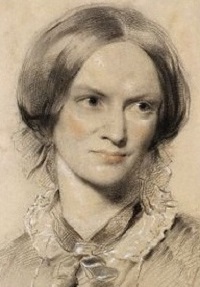 Charlotte Bronte
Charlotte Bronte
1816-1855
Charlotte Bronte (April 21, 1816-March 31, 1855) was an English novelist and poet, the eldest of the three Bronte sisters who survived into adulthood, whose novels are English literature standards. She wrote Jane Eyre under the pen name Currer Bell.
Bronte was born in Thornton, Yorkshire, in 1816, the third of six children, to Maria (nee Branwell) and her husband Patrick Bronte (formerly surnamed Brunty or Prunty), an Irish Anglican clergyman. In 1820, the family moved a few miles to Haworth, where Patrick had been appointed Perpetual Curate of St. Michael and All Angels Church. Charlotte’s mother died of cancer on September 15, 1821, leaving five daughters and a son to be taken care of by her sister, Elizabeth Branwell.
In August 1824, Bronte was sent with three of her sisters, Emily, Maria and Elizabeth, to the Clergy Daughters’ School at Cowan Bridge in Lancashire. Its poor conditions, Bronte maintained, permanently affected her health and physical development and hastened the deaths of her two elder sisters, Maria (born 1814) and Elizabeth (born 1815), who died of tuberculosis in June 1825.
At home in Haworth Parsonage, Bronte acted as “the motherly friend and guardian of her younger sisters.” She and the other surviving children – Branwell, Emily and Anne – began chronicling the lives and struggles of the inhabitants of their imaginary kingdoms. Charlotte and Branwell wrote Byronic stories about their country – Angria – and Emily and Anne wrote articles and poems about theirs – Gondal. The sagas were elaborate and convoluted and provided them with an obsessive interest during childhood and early adolescence, which prepared them for their literary vocations in adulthood. Bronte continued her education at Roe Head, Mirfield, from 1831 to 32. During this period, she wrote her novella The Green Dwarf (1833) under the name of Wellesley. She returned as a teacher from 1835 to 1838. In 1839, she took up the first of many positions as governess to various families in Yorkshire, a career she pursued until 1841.
In May 1846, Charlotte, Emily and Anne published a joint collection of poetry under the assumed names of Currer, Ellis and Acton Bell. Although only two copies were sold, the sisters continued writing for publication and began their first novels. Bronte used “Currer Bell” when she published her first two novels.
In June 1854, Bronte married Arthur Bell Nicholls, her father’s curate. She became pregnant soon after the marriage. Her health declined rapidly and she died, along with her unborn child, on March 31, 1855, at the age of 38.
Source: http://en.wikipedia.org/wiki/Charlotte_Bront%C3%AB
 Bibliography
Bibliography
Press your browser’s BACK button to return to the previous page.
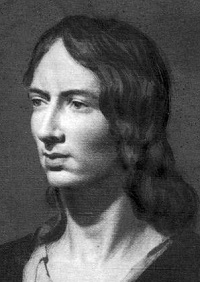 Emily Bronte
Emily Bronte
1818-1848
Emily Jane Bronte (July 30, 1818-December 19, 1848) was an English novelist and poet, best remembered for her only novel, Wuthering Heights, now considered a classic of English literature. Bronte was the third eldest of the four surviving Bronte siblings. She published under the pen name Ellis Bell.
Bronte was born in Thornton, near Bradford in Yorkshire, to Maria Branwell and Patrick Bronte. In 1824, the family moved to Haworth, where Emily’s father was perpetual curate, and it was in these surroundings that their literary gifts flourished.
Educated at home by their father and aunt Elizabeth Branwell, their mother’s sister, in their leisure time the children created a number of paracosms, which were featured in stories they wrote and enacted about the imaginary adventures of their toy soldiers. When Bronte was 13, she and Anne withdrew from participation in the Angria story and began a new one about Gondal, a large island in the North Pacific.
At 17, Bronte attended the Roe Head girls’ school, where Charlotte was a teacher, but managed to stay only three months before being overcome by extreme homesickness.
Bronte became a teacher at Law Hill School in Halifax beginning in September 1838, when she was 20. Her health broke under the stress of the 17-hour work day and she returned home in April 1839. Thereafter she became the stay-at-home daughter, doing most of the cooking and cleaning and teaching Sunday school. She taught herself German out of books and practiced piano.
In 1844, Bronte began going through all the poems she had written, recopying them neatly into two notebooks. In the autumn of 1845, Charlotte discovered the notebooks and insisted that the poems be published. Bronte, furious at the invasion of her privacy, at first refused, but relented when Anne brought out her own manuscripts and revealed she had been writing poems in secret as well.
In 1846, the sisters’ poems were published in one volume as Poems by Currer, Ellis, and Acton Bell. The Bronte sisters had adopted pseudonyms for publication: Charlotte was Currer Bell, Emily was Ellis Bell and Anne was Acton Bell. Although the sisters were told several months after publication that only two copies had sold, they were not discouraged.
In 1847, Bronte published her novel, Wuthering Heights. Although it received mixed reviews when it first came out, and was often condemned for its portrayal of amoral passion, the book subsequently became an English literary classic.
Bronte’s health, like her sisters’, had been weakened by unsanitary conditions at home, the source of water being contaminated by runoff from the church’s graveyard. She became sick during her brother’s funeral in September 1848. Though her condition worsened steadily, she rejected medical help and all proffered remedies, saying that she would have “no poisoning doctor” near her.
She eventually died of tuberculosis on December 19, 1848.
Source: http://en.wikipedia.org/wiki/Emily_Bront%C3%AB